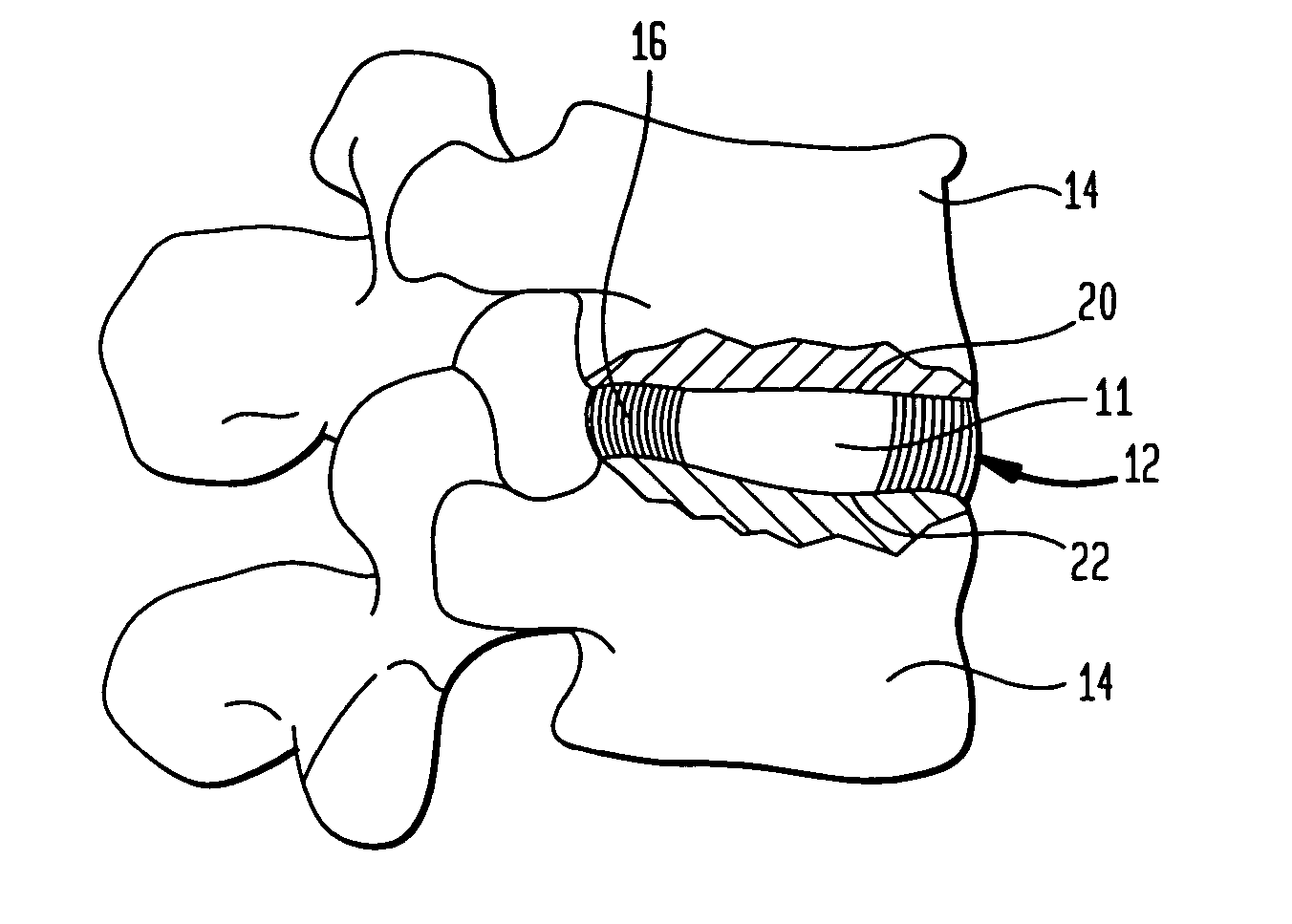Radiovisible hydrogel intervertebral disc nucleus
a radiovisible hydrogel and disc nucleus technology, applied in the field of prosthetic intervertebral disc nucleus, can solve the problems of degeneration of intervertebral disc, final pathological changes, back pain, etc., and achieve the effect of preventing fluid leakage, restoring the normal function of the nucleus, and preventing fluid leakag
- Summary
- Abstract
- Description
- Claims
- Application Information
AI Technical Summary
Benefits of technology
Problems solved by technology
Method used
Image
Examples
example i
[0077] A PVA solution was formed by mixing 15 g of PVA powder (Kuraray 117 or equivalent), having a molecular weight about 78000 and about 99.7% hydrolysed (Cat. No. 15129, Polysciences Inc., Warrington, Pa.), with 85 ml of a solvent comprising 15% water in DMSO. The mixture was heated at about 110° C. until a homogenous viscous solution formed.
example ii
[0078] 0.1 gram of gold powder (maximum diameter 75 μm) per cc of liquid-phase of PVA solution of Example I were mixed. The two ingredients were combined in the following manner to create a metal-filled polymer solution. A plunger from a 5 cc first syringe was removed and the first syringe was slowly filled half way with PVA solution, 0.5 g of the gold powder was poured into the syringe. The first syringe was then completely filled with PVA solution, and the plunger replaced. A two-way luer connector was screwed onto the tip of the first syringe and the connector was primed with PVA solution from the syringe. The first syringe and a second syringe of equal size were connected using the connector. The gold powder solution from the first syringe was squeezed into the empty syringe. This was repeated until the solution was uniformly mixed. A third syringe was filled with PVA solution without any gold. 5 cc of the PVA solution of the third syringe was injected into a nucleus mold having...
example iii
[0079] About 20 cc of the gold solution was prepared as described in Example II using two 20 cc syringes and 2 grams of gold powder. The metal filled polymer solution was slowly injected into a 20 cc implant mold (for a #5 size implant), filling the mold completely. The mold reservoir was capped so that the metal-filled PVA solution will not leak out of the mold if the mold is inverted. The mold was pressurized and placed in a Turbula Mixer which was placed into a programmable freezer. The mixer used must be able to both rotate and tip the mold during gelation of the metal filled PVA solution to keep the powder in the solution uniformly distributed. The mixer can rotate the mold about a central axis, tilt the mold back and forth through a 90° arc about an axis perpendicular to the central axis. This kept the metal particles uniformly suspended in the solution until it gelled.
PUM
 Login to View More
Login to View More Abstract
Description
Claims
Application Information
 Login to View More
Login to View More - R&D
- Intellectual Property
- Life Sciences
- Materials
- Tech Scout
- Unparalleled Data Quality
- Higher Quality Content
- 60% Fewer Hallucinations
Browse by: Latest US Patents, China's latest patents, Technical Efficacy Thesaurus, Application Domain, Technology Topic, Popular Technical Reports.
© 2025 PatSnap. All rights reserved.Legal|Privacy policy|Modern Slavery Act Transparency Statement|Sitemap|About US| Contact US: help@patsnap.com



